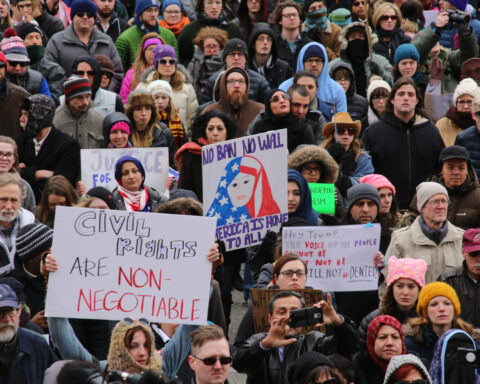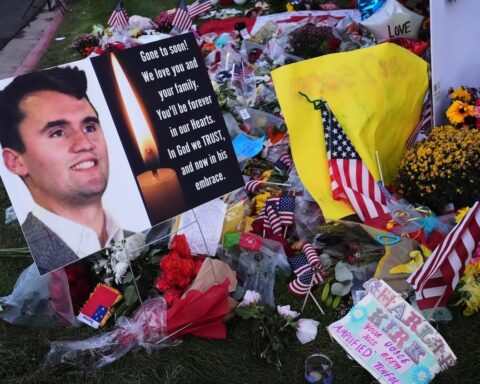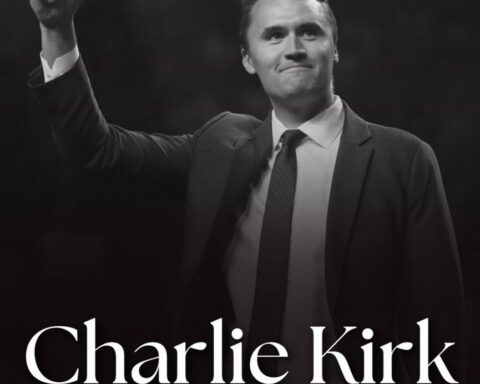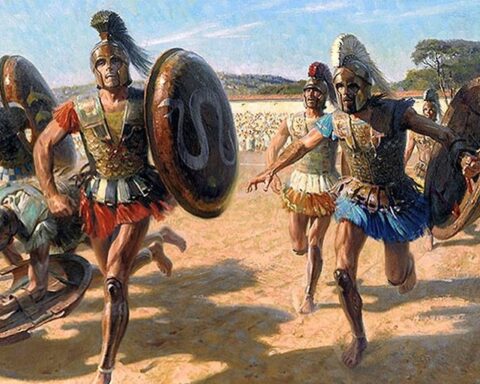Leffler’s Thesis, Argument, and Persuasiveness
Leffler presents the idea that the Cold War was a “struggle for a way of life” (p. 3). He began writing soon after the fall of Communism in the Soviet Union, and was profoundly affected by the manner in which Ronald Reagan and Mikhail Gorbachev worked together to alter history (p. 4). The way these men were able to amicably bring the Cold War to an end prompted Leffler to consider why other leaders had not been able to do so before. According to Leffler, rather than intentionally bringing the conflict to an end, prior leaders of both Superpowers, with full knowledge of what they were doing and accepting the risks involved, continued the rivalry, often at the expense of other projects that could have served their nations better (p. 5). Leffler concludes that the continuance of the Cold War was based upon the different ideological systems upon which each nation was founded, as well as other influences, such as special economic interests, domestic pressures, and bureaucratic realities (p. 6). Ultimately, the role of “human agency” amongst the leadership of both nations is the issue that predominates Leffler’s work (p. 6). As such, Leffler’s book is not an exhaustive history of the Cold War, but examines five pivotal time frames during the Cold War when the possibility of cessation of the Cold War was heightened. In this manner, Leffler ponders the motivations and choices made by the Soviet and American leaderships during these five periods (p. 7). In effect, Leffler’s book serves as “a history of lost opportunities…and it shows that opportunities are lost when leaders who wield great power are engulfed by circumstance and entrapped by ideology…” (p. 9).
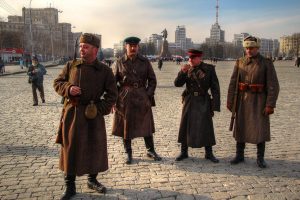 The first of the five periods that serve as the organizational framework of the book focuses upon Truman and Stalin and the origin of the Cold War from 1945-1948. World War II had ended, and for a brief period of time, both leaders hoped that the wartime alliance would continue in some fashion. Russia, though victorious, had been decimated by the Nazi invasion, and Stalin hoped that his relationship with the West would allow for a quicker recovery (p. 36). At the same time, the Soviet leader fully intended to maintain hegemony over the regions absorbed during the war, especially in Eastern Europe, where they served as a buffer with the west. History had shown the Russians that Germany was a malevolent force, according to Leffler, so a buffer was necessary (p. 30). In America, Truman had only recently become president, and had little knowledge or experience of international diplomacy (p. 40-41). Leffler states that Truman wanted to get along with Stalin, but some advisers advocated a “tough stand against the Soviet Union” (p. 41-42). Rather than approaching Stalin with an attitude of respect and honest diplomacy, Truman determined that any negotiations would be concluded only on American terms, achieving at least “85%” of American goals (p. 42). Once the atomic bombs were dropped on Japan, Truman and his administration believed that the Soviets would acquiesce to American pressure, and thereby withdraw from the buffer states and accept American primacy, however, this was not how things worked out. The Soviets were not easily threatened (p 45). By late 1945, Stalin believed that it was still possible for the two nations to work together, but also maintained a vacillating policy, which confused the leadership in Washington (p. 55). Ultimately, world events, coupled with the particular ideologies held by Truman and Stalin, caused a break in the wartime coalition (p. 57-62). Leffler points out that American support for a unified Germany served as a major stumbling block (p. 65). The Truman Doctrine was put into place, wherein the United States determined to “support free people who are resisting attempted subjugation by armed minorities or by outside pressures.” This became American policy for the duration of the Cold War (p. 62). Stalin believed that this was “capitalists acting as capitalists,” seeking to isolate the Soviet Union. Fearing that the American’s were encircling the Soviet Union, which they were, Stalin took steps to rebuff American influence in Eastern Europe (p. 66).
The first of the five periods that serve as the organizational framework of the book focuses upon Truman and Stalin and the origin of the Cold War from 1945-1948. World War II had ended, and for a brief period of time, both leaders hoped that the wartime alliance would continue in some fashion. Russia, though victorious, had been decimated by the Nazi invasion, and Stalin hoped that his relationship with the West would allow for a quicker recovery (p. 36). At the same time, the Soviet leader fully intended to maintain hegemony over the regions absorbed during the war, especially in Eastern Europe, where they served as a buffer with the west. History had shown the Russians that Germany was a malevolent force, according to Leffler, so a buffer was necessary (p. 30). In America, Truman had only recently become president, and had little knowledge or experience of international diplomacy (p. 40-41). Leffler states that Truman wanted to get along with Stalin, but some advisers advocated a “tough stand against the Soviet Union” (p. 41-42). Rather than approaching Stalin with an attitude of respect and honest diplomacy, Truman determined that any negotiations would be concluded only on American terms, achieving at least “85%” of American goals (p. 42). Once the atomic bombs were dropped on Japan, Truman and his administration believed that the Soviets would acquiesce to American pressure, and thereby withdraw from the buffer states and accept American primacy, however, this was not how things worked out. The Soviets were not easily threatened (p 45). By late 1945, Stalin believed that it was still possible for the two nations to work together, but also maintained a vacillating policy, which confused the leadership in Washington (p. 55). Ultimately, world events, coupled with the particular ideologies held by Truman and Stalin, caused a break in the wartime coalition (p. 57-62). Leffler points out that American support for a unified Germany served as a major stumbling block (p. 65). The Truman Doctrine was put into place, wherein the United States determined to “support free people who are resisting attempted subjugation by armed minorities or by outside pressures.” This became American policy for the duration of the Cold War (p. 62). Stalin believed that this was “capitalists acting as capitalists,” seeking to isolate the Soviet Union. Fearing that the American’s were encircling the Soviet Union, which they were, Stalin took steps to rebuff American influence in Eastern Europe (p. 66).
Secondly, Leffler looks at Malenkov and Eisenhower and the missed opportunities in 1953-1954. Stalin had just died and the Kremlin was in turmoil; Eisenhower was the new American President. While Eisenhower briefly considered encouraging resistance in the Soviet bloc (p. 122-123), he also desired to develop détente with the Soviets, though it was elusive (p. 133). The Americans were convinced that Soviet policy was to gain “domination of the non-communist world” (p. 133). For their part, the new Soviet leadership, headed by Malenkov, waged “a tireless peace campaign” and presented themselves as “champions of disarmament” (p. 135). Interestingly, Leffler points out that while Eisenhower “declared that there was a chance for peace,” he did little to act on it (p. 147). Malenkov unequivocally declared that the Soviets had no desire for conflict, but “peaceful economic competition” between the nations (p. 147). At the same time, the Soviets could not imagine the Cold War’s cessation, since the capitalist west was viewed as fundamentally hostile (p. 148). The Americans failed to act on the possibilities, fearing the resulting ramifications in other parts of the world, such as Germany and Vietnam (p. 147). The chance for peace existed, but neither side really pursued it, because of ideological presuppositions on both sides.
The third framework scenario considers the events from 1962-1965, with Khrushchev, Kennedy, and Johnson. While this era fits Leffler’s description as a time when peace was achievable, it began with great tension – the two nations came closer to active warfare than at any other time in the Cold War (p. 151). Khrushchev had predicated his rule by advocating military “one-upmanship.” He was convinced that by maintaining equality with the United States in military matters, the fear of nuclear war and the threat of mutual destruction would maintain the peace. The Cuban Missile Crisis almost served as the proof of his error, but he backed down, removing Soviet missiles from Cuba, as America demanded (p. 158). Kennedy responded with a shift in attitude toward the Soviet Union, finding virtue in the Soviet people (p. 183). The chance for peace had resurfaced, according to Leffler. Kennedy presented a series of steps that could be taken to relax tensions. Likewise, Khrushchev desired improved relations between the countries (p. 187). According to Leffler, a continual thread that ran through the Soviet understanding of history was that a full-strength Germany was a threat to Russia. Still, both leaders desired to pursue the peace (p. 188), though Kennedy feared that his prestige as a champion for the free world would be damaged if he went too far with Khrushchev (p. 190). What Kennedy would have eventually done will never be known, since he was assassinated before he had fully developed this move toward peace (p. 192). Johnson did not place great priority on détente or peace (p. 202). He was more focused on the 1964 elections, and “concessions in behalf of peace threatened to animate critics” (p. 205). Rising American involvement in the Vietnam conflict exacerbated the tension, with the two superpowers on opposite sides of the conflict (p. 220). Khrushchev was overthrown as leader of the Soviets, and Brezhnev and Kosygin, the new leadership, were more concerned with consolidating power and reestablishing Soviet prestige in the aftermath of Khrushchev’s blunders. This opportunity for peace was lost to “ideological prisms and historical memories that made détente extremely difficult to sustain. They could not transcend their past, overcome their fears, modify their aspirations, escape the pressure of allies, or ignore domestic political adversaries” (p. 233).
Leffler then moved into his fourth timeframe – the end of détente during the leadership of Carter and Brezhnev from 1975-1980. A decade had passed from the previous era under discussion, and some progress had been made in relations, under Nixon and Ford. Leffler reports that Brezhnev enjoyed working with those two men, and was apprehensive when Carter was elected in 1976. Ford and Brezhnev had met first in Vladivostok, and then in Helsinki, and optimism reigned that an end of the tension could be in sight (p. 234). During that time Brezhnev suffered a stroke, and his health deteriorated. While the leaders seemed to find an accord, the American Presidents were castigated on the home front, often for their policies regarding the Soviets (p. 252). Both nations were heavily involved with Third World movements, with both arms and financial support, yet they both tried to move beyond those activities in discussions, focusing upon missiles and nuclear weaponry (p. 253).
When Carter was elected, Brezhnev and the Soviet leadership communicated that they were ready to negotiate and work for a peaceful settlement of differences (p. 257). Carter, lacking foreign policy experience, relied on his Secretary of State, Cyrus Vance, and his National Security Advisor, Zbigniew Brzezinksi – and they often clashed with one another. Carter seemed to move from one to the other and neither tried to convince Carter to focus on Soviet-American relations (p. 260). Carter used the theme of “Human Rights” as the centerpiece of policy, and his relationship with the Soviet Union was colored by this (p. 263). During his tenure, several major world events occurred that affected this relationship between the superpowers, as well as affecting the ability of the leaderships of both nations to govern. Paramount among these events was the fall of the Shah and the rise of militant Islam in Iran. Coupled with the breakdown of order in Afghanistan and the subsequent invasion by Soviet Forces, this period that had started with promise, limped towards its end (p. 301). Ultimately, Brezhnev killed détente with the United States (p. 334). With American confidence shaken by American hostages in Iran (though that was not caused by the Soviets), the Soviet invasion of Afghanistan stressed the relations between the nations to the breaking point. Carter refused to participate in any negotiations (p. 335). Détente was dead and the Cold War raged on.
Leffler’s brings his analysis full circle by concluding his study with the heroes of his book: Reagan, Bush, and especially Gorbachev. They brought about the end of the Cold War from 1985-1990. These men were able to accomplish what all the others had failed to do. In a sense, this section is the anti-thesis of the other four. Where previous leadership had failed to take advantage of opportunities, Gorbachev, Reagan, and Bush were able to bring the Cold War to an end, with the Soviet Union disintegrating in the process. Reagan had been a critic of détente all along, and after initially haranguing the Soviet Union as the “Evil Empire” and being convinced that the Soviets had nefarious plans for world domination, he eventually came to soften his stance (pp. 339, 347). Gorbachev, while believing in the Soviet system, realized that major changes had to be implemented to maintain a viable economy. He withdrew troops from Afghanistan, sharply reduced Soviet arms, and began major domestic reforms (pp. 393, 403). Leffler repeatedly points out that it was Gorbachev who really ended the Cold War, supported by his relationship with Reagan (and Bush), who engendered enough trust that he felt comfortable enough to be able to make major changes within the Soviet Union (p. 448). He no longer feared that the United States was attempting to overthrow the Soviet Union, and in order to accomplish his domestic goals, he needed to end the Cold War. In the end, the Americans met Truman’s original goal of getting “its way 85 percent of the time” (p. 450).
Leffler’s argument is persuasive. He does highlight some of the major events and time periods of the Cold War. He does a fine job of describing the background of those events. The people involved are fleshed out fairly well, to give the reader a good understanding of their inner motivations for acting the way they did. In addition, domestic realities that influenced the leaders of both nations are given good attention. While other time periods are given short shrift, the major opportunities for rapprochement were highlighted, as well as the major reasons why these opportunities were missed. Leffler gave equal opportunity to both sides of the conflict, allowing for unbiased analysis. Strengths and foibles of each leader are mentioned, giving an air of authenticity to his argument. All in all, Leffler’s thesis and argument were compelling. They highlight the numerous missed opportunities that occurred during the Cold War.
Leffler’s Sources
Leffler spent several years of research, spending much of the mid-90s analyzing the American records in the Archives II, the John F. Kennedy Library, as well as receiving inspiration from the Norwegian Nobel Institute. The early twenty first century was spent at the Woodrow Wilson International Center for Scholars and Oxford, where Leffler had the opportunity to learn from great scholars of Russian and Soviet politics. By that time, Leffler determined to put all of his research into writing. Leffler also acknowledged other individual scholars that influenced his work, including Odd Arne Westad, who helped to shape Leffler’s understanding of the role of ideology during the Cold War. Vlad Zubok also provided information on Brezhnev and Gorbachev, who are important in Leffler’s current work (p. xv-xvii).
While Leffler’s sources were suited for a work focused upon the direct relationship between the Soviets and Americans, in Westad’s The Global Cold War, the focus was on the Third World. Consequently, many of Westad’s sources were from Third World sources. Westad gives acknowledgement to “those many scholars who have written accounts of various aspects of the Cold War in Africa, Asia, and Latin America…” (p. x). LaFeber’s America, Russia, and the Cold War, 1945-2002 was less direct in explaining the origins of its sources. LaFeber does list several individuals and organizations that contributed to his analysis, but other than a brief mention of “recent scholarship and materials from openings of the Unites States, Soviet, and Chinese archives,” few specifics are provided, unless one meticulously read the footnotes (p. xiii).
Does Leffler’s work proves the United States won the Cold War?
Leffler argues that the end of the Cold War was primarily brought about by the activity of Mikhail Gorbachev, who served as the “indispensable agent of change” (p. 466). While Reagan and Bush were important in this endeavor (p. 9), Gorbachev needed the Cold War to end in order refocus the Soviet Union to the “real promise of communism, now reconceived as democratic socialism” (p. 450). Because of his strong incentive to end the Cold War, the Americans exploited the weakness of the Soviet bargaining position. Truman had stated at the outset of the Cold War that there could be cooperation between these two superpowers if the United States got its way at least 85 percent of the time, and Leffler points out that this rubric was being achieved by the end of the 1980s (p. 42, 450).
Reagan had determined, according to Leffler, that the nation that provided the system under which people could best experience a peaceful, prosperous, and free lifestyle would be the victor of the Cold War (p. 465). The tension that existed for the duration of the Cold War tested both superpowers, militarily, economically, and politically. Both nations “struggled with crosscutting pressures” (p. 7). In the end, the strain was too much for the Soviet Union and it fell apart, while the United States endured. In that sense, Leffler would argue that the United States did win the Cold War.
At the same time, Leffler does not use those exact words. In fact, he points out that many of America’s policies worked to short-term advantage, but produced long-term problems, especially in Third World countries that had been the recipient of American intervention, whether militarily or financial (p. 466). Leffler refers to the events of September 11, 2001, which were the result of such intervention dating back to the Cold War (p. xv). Leffler’s perspective is really that the Cold War was propagated by both sides, and only came to an end because the right men, Gorbachev and Reagan/Bush, were in power at the right time (p. 4). Throughout the Cold War, the leaders of both nations had been convinced that their nation had the best “formula for the good life,” based upon their respective “ideological axioms and historical experience” (p. 8). It was Reagan, Bush, and even more so Gorbachev, who transcended the decades’ long animosity – though there was still much disagreement over the fundamental ideologies – to bring the Cold War to an end. It took their “courage, imagination, and determination” to produce a peaceful conclusion (p. 9).
In that sense, Leffler would argue that everyone won the Cold War. While the Soviet Union soon ceased to exist, and the United States endured, the citizens of both nations, and indeed the whole world, were the beneficiaries. Leffler points out that “around the globe peoples were struggling to define their future…so the Cold War was indeed a struggle for the soul of humanity” (p. 8). After World War II ended, Europeans, Asians, Africans, and Latin Americans began to look to the two superpowers for guidance. The Cold War impacted the entire globe. The policies of the Soviet Union and United States affected everyone. The Cold War had led to Soviet and American involvement in “civil wars and regional conflicts” around the world, and an active involvement in the “international system” (p. 4,5). When the Cold War ended, the resulting peace allowed the world the opportunity to enjoy a respite from the decades-long heightened tension (p. 9).
Does Leffler’s work prove that the United States won the Cold War? The short answer is that it does. The United States survived the Cold War while the Soviet Union did not. This result was not because the United States overcame the Soviets, but because the Soviet Union altered its goals before succumbing to economic issues that it could no longer avoid (p. 466). At the same time, not only did the United States emerge victorious, but also the citizens of the Soviet Union (which soon became the “former” Soviet Union), and the citizens of the world as a whole won the Cold War. This was not simply because the American system proved to be better, but because the ease in tension created a more peaceful environment. While regional conflicts have raged on since that time, the threat of nuclear annihilation has diminished considerably (p. 8, 467). Yes, the United States won the Cold War, but so did everyone else.
For the Soul of Mankind. Melvyn P. Leffler. New York: Hill and Wang, 2007. 586 pp. $35.00. ISBN 978-080909717-3


